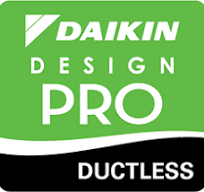When summer hits are you often surprised by how hot your home gets, even with the AC running? If your energy bills are climbing and certain rooms feel more like saunas, it’s worth checking your windows to see if they’re to blame.
Old or poorly performing windows and doors are a major source of energy loss in homes. The U.S. Department of Energy has reported that windows can account for up to 30% of residential heating and cooling energy use.
Understanding why your windows are letting in too much heat, and what you can do about it, is the first step toward better comfort, lower energy bills, and a more efficient home.
Reasons Your Windows Are Letting in Heat
1. Worn-Out Weatherstripping and Leaks
Over time, seals around windows degrade as frames expand, contract, and settle. Gaps, cracks, or damaged caulking let warm air seep in (and your cooled air escape), making your windows leaky and inefficient. You might even feel drafts near the frame on a windy or hot day.
2. No Insulation from Single-Pane Glass
If your home still has single-pane windows, they’re offering little to no insulation against outside temperatures. Single-pane glass allows heat to transfer directly into your home, making your air conditioner work overtime.
3. Damaged or Foggy Glass
Double or triple-pane windows are designed to trap insulating gas between layers of glass. But if the seal breaks, moisture can get in and create fogging on the inside of the window panes, a sign the window is no longer sealed properly.
4. Outdated Windows
Modern energy-efficient windows are built with low-emissivity (Low-E) coatings, multiple panes, and advanced gas fills like argon or krypton. If your windows are more than 15-20 years old, they likely lack these features, contributing to some excess heat gain.
How to Tell If Your Windows Are Inefficient
Homeowners often ask: “How do I know if my windows are causing energy loss?” Here are a few signs:
- Hot or cold spots near windows
- AC running constantly during the day
- Condensation or fog between panes
- High summer energy bills and winter heating costs
- Visible gaps or cracked caulking
A home energy audit can pinpoint these issues with infrared cameras and blower door testing, giving you a clear roadmap for energy efficiency upgrades.
When to Schedule Window Replacement
Sometimes, a single window may be responsible for a noticeable comfort issue in just one room. But if your entire home feels drafty or overheated, it’s time to bring in a home performance and energy expert. The Energy Savers home performance professionals can assess your entire building envelope and HVAC system to determine whether a full window replacement is truly the right move.
Window replacement doesn’t just solve heat gain problems; it can also enhance your home’s curb appeal. If you’re already considering an insulation or HVAC upgrade, it may make sense to bundle in a window replacement to maximize available rebates and incentives. Upgrading multiple systems at once often qualifies for deeper savings through NYSERDA programs and can streamline your home’s path to peak energy performance. If your windows are inefficient, chances are your insulation and HVAC systems could use an upgrade, too.
Trust Energy Savers for Energy Efficiency Upgrades
At Energy Savers, Inc., we specialize in helping New York homeowners identify and fix energy issues. Whether it’s windows losing energy or poor insulation, our team provides expert solutions backed by NYSERDA, the Building Performance Institute, and the Better Business Bureau. We don’t just sell windows—we offer whole-home performance upgrades that deliver lasting comfort and savings.







